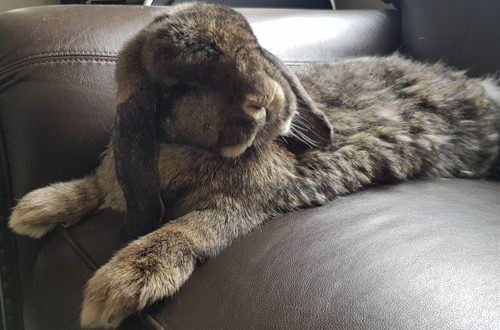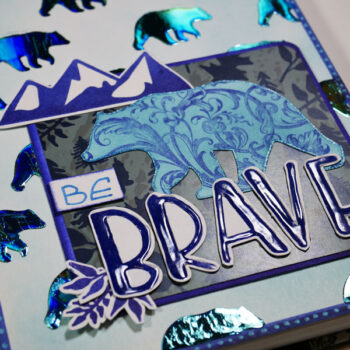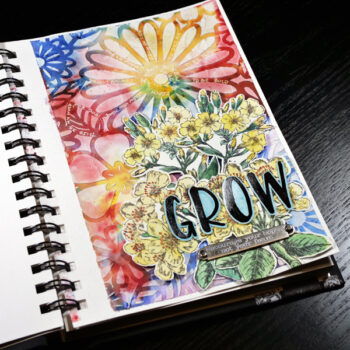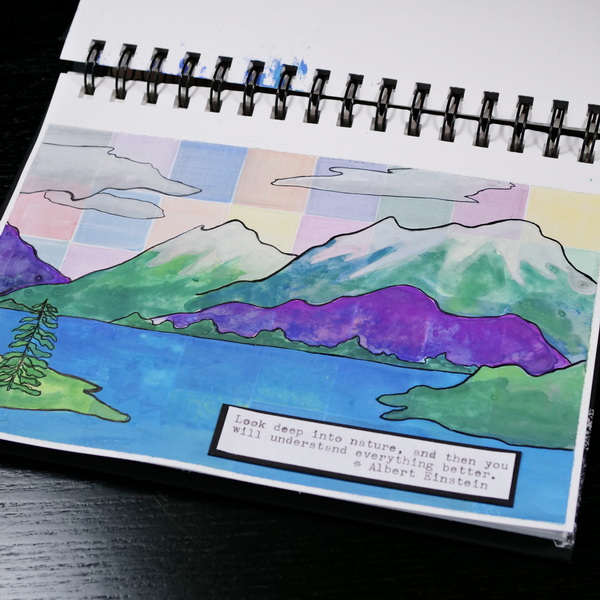
Watercolor Landscape Paint Along
Today’s project is a watercolor landscape paint along using gouache. I love using landscapes in my art journal pages. Creating landscapes is great practice for understanding how different art mediums work together. For this watercolor paint along we will be using colored pencils, acrylic paint, gouache, and ink to make a dynamic mixed media art journal page.
What is Gouache?
If you have never used gouache in a project, it is an opaque watercolor medium. It has similar pigments and binders as watercolor paints, but includes a white filler, such as chalk, which makes these paints opaque.
Gouache provides a different result than watercolor. The opaque nature of the paint works well in mixed media projects. Where watercolor paints usually cannot be added on top of more opaque mediums, gouache has the color intensity and opaque qualities to work on top of these mediums.
There are many brands of gouache available, but the set that I am using in today’s project is made by Holbein.
The Intention
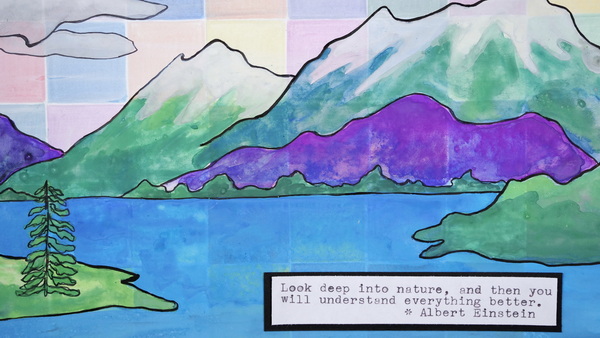
The intention with this watercolor landscape paint along was to share with you my painting process. When you are learning how to use brushes and watercolors, it can be challenging to know what colors to use and how to execute a painting. The art journal is a great place for exploration, to try out new mediums and understand how they work.
For this art journal page, I found a great quote by Albert Einstein to add to this piece:
Look deep into nature, and then you will understand everything better.
Albert Einstein
Taking it slow, the idea of taking a breath and pausing is something I try to do in my personal life. This page is another reminder of how we can have those moments of clarity, when we pause and look deep into nature. It can be a powerful way to show ourselves self-care.
Watercolor Landscape Paint Along with Gouache
For this watercolor landscape paint along I chose to specifically showcase colored pencils and gouache. This is a bit of a longer tutorial as I do share the step-by-step process for painting with gouache.
Create a Grid
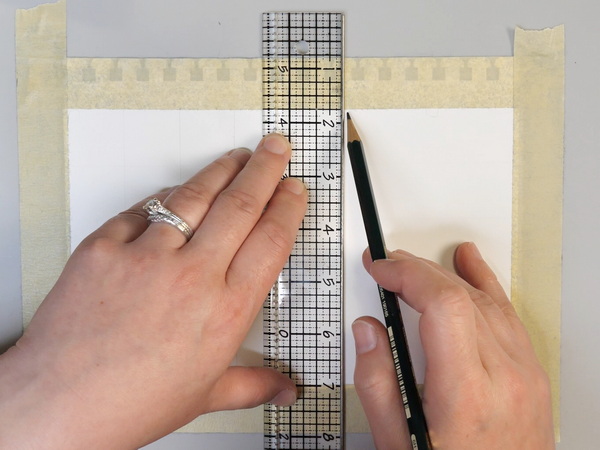
Using a pencil and ruler, create a 1” by 1” grid on the page. Use a light graphite pencil, such as a 6H to pencil in the lines.
Adding Colored Pencils to Squares
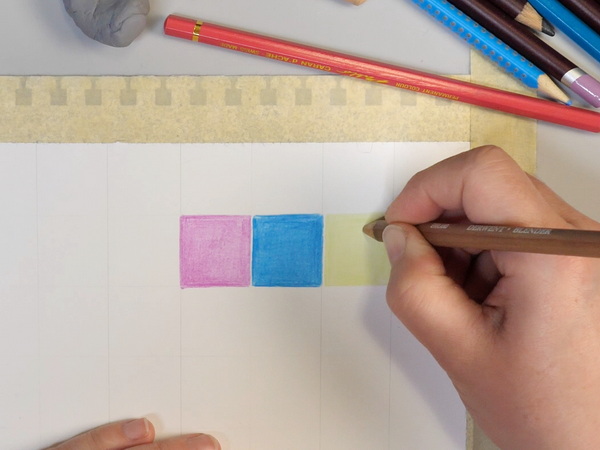
Use colored pencils to add color to the squares. Make sure to leave a rim around each of the squares so that every square has a white border.
For a more consistent blend of color, add pencil crayon in layers to the squares. Use a blender pencil to help blend the color more consistently and push the color into the paper fibres.
With this step, make sure to use colored pencils that are not water soluble. You can usually tell if a colored pencil is water soluble as it will have a water drop or brush icon on the barrel of the pencil.
Add Gesso to Colored Squares
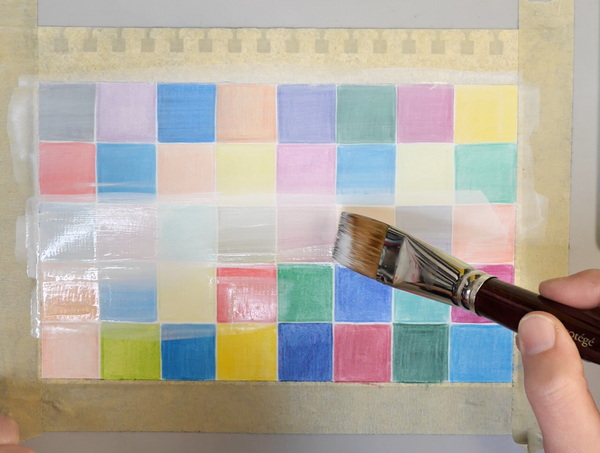
Once all the squares are colored, water down gesso and apply a thin layer across the paper. This will mute the colored pencil and bring a consistent color value to the journal background. It will also create a seal over the background, giving a consistent surface for adding gouache.
Tracing Image onto the Art Journal Page
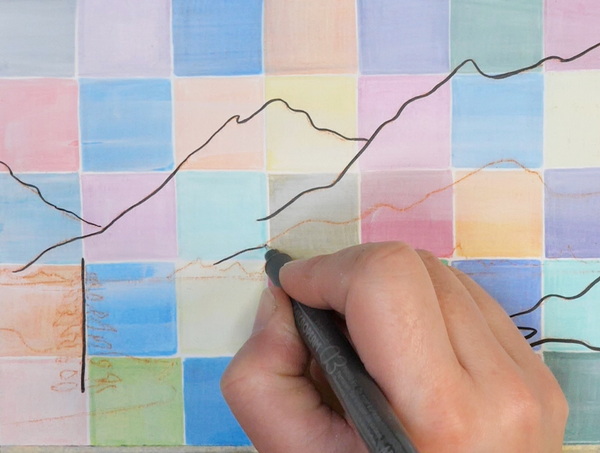
Trace the image onto the art journal page. Please see this article for the different ways to transfer images. I used a Contè crayon and tracing paper to add my image. I tend to create a sketch and trace it onto the background to prevent errors in composition. This also prevents the need to erase unnecessary pencil marks to my colored and painted background.
Use a black permanent marker or pen to add the image onto the art journal page. Use an eraser to remove any Contè crayon lines.
Adding Gouache Paint to the Image
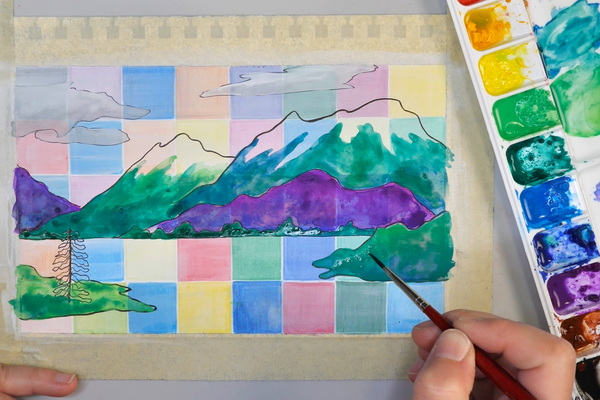
Add gouache paint to the image to create a beautiful watercolor landscape. As you paint, you may decide that you would like to see more or less of the background. If you would like to see more of the background color peeking through, water down and more thinly apply the gouache paint. The video above shows the step-by-step process for adding gouache paint to the image.
Fixing Ink Lines
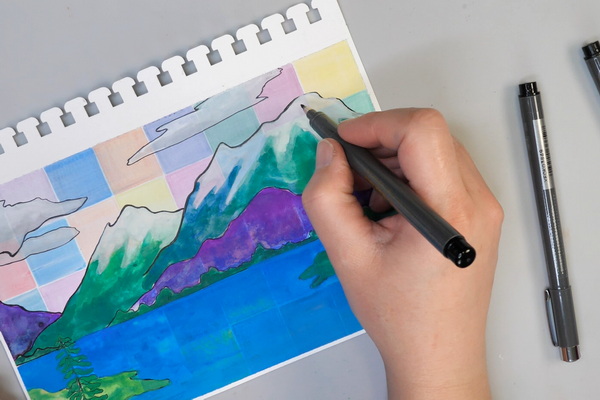
Once the paint has dried, you may notice that some of the ink lines have been painted over. Draw again over these areas with your permanent pen to add more contrast.
Add the Quote
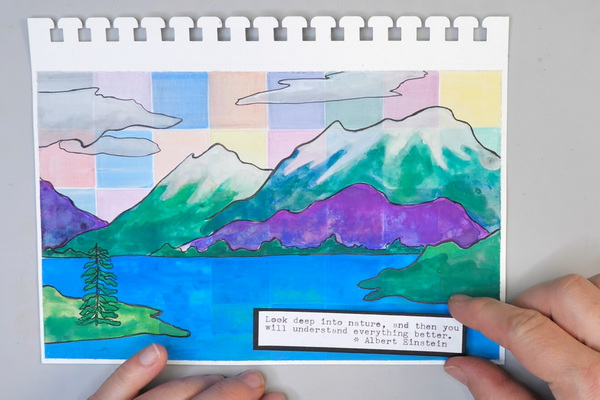
Use the quote above or find your own quote for this art journal page. This is also an opportunity to add journaling to the page.
Questions?
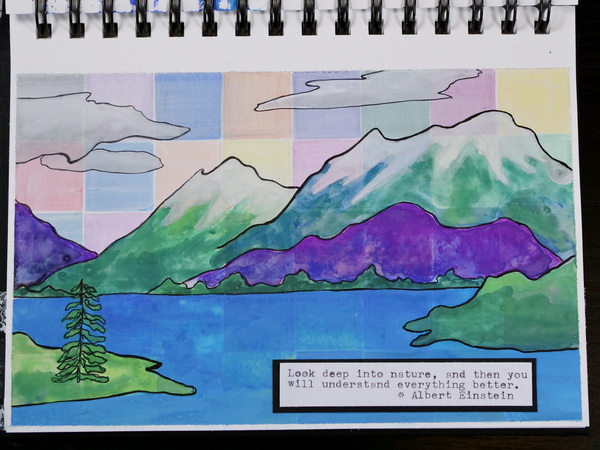
Do you have any questions on how to use gouache paint in your mixed media work? I would love to hear what you think about this project and the techniques presented. Please comment below or contact me directly. I hope that you have a great weekend and take some for creative self-care!
Supply List
- Bristol Paper Journal
- Ruler
- Faber-Castell 6H Graphite Pencil
- Colored Pencils from Faber-Castell, Derwent and Caran d’Ache
- Derwent Blender Pencil
- Liquitex Gesso
- 1″ Acrylic Brush
- Water Container and Water
- Tracing Paper
- Contè Crayon
- Sakura MicroPerm 01 & 03 Ultrafine Permanent Black Pen
- Zebra Zensations Black Brush Pen- Fine – Permanent
- Holbein Gouache: Ivory Black, Permanent White, Violet, Ultramarine Deep, Turquoise Blue, Permanent Green Deep, Permanent Green Light, Lemon Yellow, Permanent Yellow Deep
- daVinci Cosmotop Spin Watercolor Brushes: Round Size 0, 2, 4, 6



